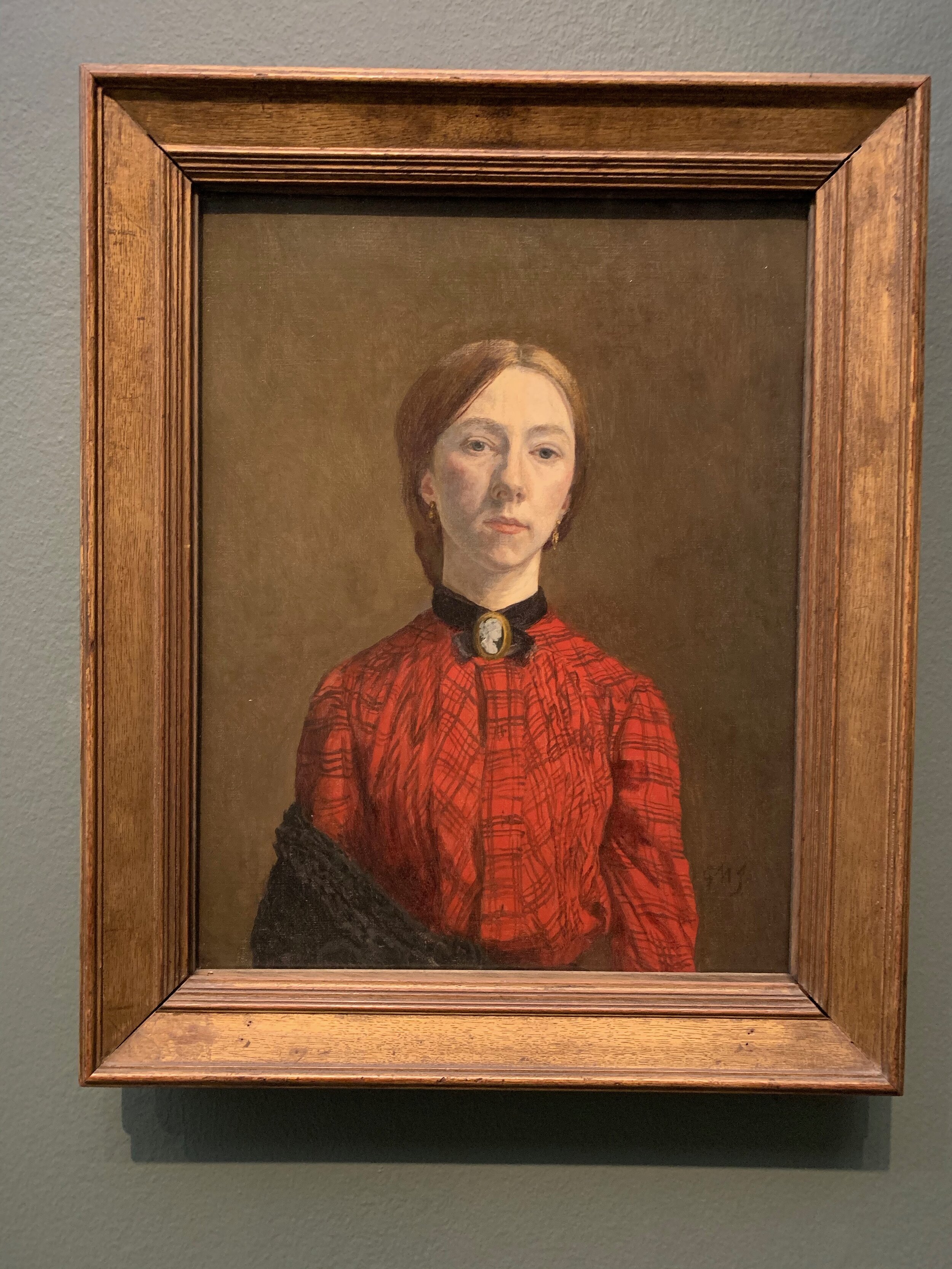Gwen John: Of Portraiture & Passion
by Mattea Gernentz
Months ago now, I wandered into a dim alcove of the Tate Britain, surrounded suddenly by something like a Greek chorus of framed enigmatic women and cats. It was the loveliest place to be—an artist spotlight on the works of Gwen John, on display until January 2021. I had seen Gwen John’s self-portrait before thanks to @womenarts1 on Twitter—an account which tweets, as you can probably guess, artworks by women multiple times throughout the day—but my remembrance of her name had somehow lapsed into oblivion. As I stepped into that modest gallery, an unexpected windfall, and took a closer look at Gwen John’s portraits, I knew I would never again forget her name.
Cat (c. 1904-5)
Born on June 22, 1876 in Haverfordwest, Wales, Gwen became interested in drawing at a young age, a practice which her mother encouraged until her premature death when Gwen was only eight. As a result of the loss, Gwen’s family moved to Tenby where she and her three siblings were cared for by two aunts and received an education from governesses.
Chloë Boughton-Leigh (c. 1904–8)
From 1895 to 1898, Gwen studied at the Slade School of Art; it was the only art school in the U.K. at the time that allowed the admittance of women students, though there was still no mixing permissible between genders on the grounds or in classes and corridors. Gwen’s younger brother, Augustus, was also a gifted artist and attended Slade at the same time, attracting more attention with his glamor and good humor than his sister’s steadfast skill, intensity, and reticence. For years, this dynamic would continue. However, even Augustus conceded that his sister was in fact superior in artistic talent, admitting, “In 50 years’ time, I will be known as the brother of Gwen John.”
Self-Portrait (1902)
While Gwen John was a Welsh artist by birth, she spent most of her life in France, mingling there with such prominent creatives as Matisse, Picasso, and Rilke. She was also the lover of the sculptor Auguste Rodin and remained devoted to him for over a decade, penning many fervent letters, even as he grew increasingly distant. Gwen’s first trip to Paris in 1898 changed the trajectory of her life and artistic career, and she was able to study underneath the famed James McNeill Whistler at the Académie Carmen. With the patronage of John Quinn, an American art collector, Gwen was able to soar to new heights and escape a precarious life of poverty.
Unconventional, passionate (some might even say obsessive), perfectionistic, and independent, Gwen John was resentful of the idea that, as a woman and a thriving artist, her purpose could ever be confined to marriage and child-bearing, expressing once: “I think if we are to do beautiful pictures, we ought to be free from family conventions and ties.” She never professed an affiliation with an artistic movement, striving only to create art that met her own high standards and allowed her to retreat into the comfort of an “interior life.” Gwen was complex and often unpredictable, experiencing at once a ruthless compulsion to isolate from the world and a desperate desire for a love that would finally satisfy. In the summer of 1903, she and a friend decided to walk to Rome on a whim with their painting supplies. In 1913, Gwen surprised her peers by converting to Catholicism. She confessed that, for long periods of time, she would feel unable to pray, but her hundreds of detailed renderings of nuns and worshippers in her church in Meudon, France speak nonetheless to a distilled kind of quiet devotion and everyday liturgy.
Young Woman Holding a Black Cat (c. 1920–1925)
As one of the pioneers of intimism, a twentieth century painting style relying upon impressionistic techniques and focusing on domestic interiors, Gwen John crafts solitary women in her art who are out of reach, without any obligation to please an audience—women in reverie, transfixed, focused on intellectual pursuits. She provides the eye with muted, sometimes drab settings in order to bring attention to the light and life found within each subject. Interestingly, Gwen John’s art is also thought to be one of the sources of the stereotypical association between single women and cats. Though no stranger to love affairs with both men and women, Gwen never married and spent the latter years of her life with her cats, who starred in her paintings and poetry. In Country Life (1924), Walter Pach perfectly sums up the winsomeness and brilliance of her enduring art: “The last paintings [are] just radiant with a quiet luminosity."
Study of Marigolds (1918)
As I spent time with her art and learned more about her fascinating life, I began to see myself in Gwen, in her fierce independence and her painful flickers of loneliness. Quiet and unassuming but with an unbending will. Her severity with herself, a perfectionism that drove her to only reluctant exhibiting because her work was never truly finished. A desire for control competing with a yearning for stillness and detachment. Her simple faith. Her penchant for loving too deeply, even irresponsibly. In Gwen, I found someone truly inspiring in her ability to treasure up the little things, to elevate their beauty for all to see. I believe she had a special way of loving the overlooked because she had so often been passed over herself. While confident in her abilities, once shrugging at Cézanne’s work and declaring she could do better, Gwen was also humble until the end: “I cannot imagine why my vision will have some value in the world…and yet I know it will. I think I will count because I am patient and recueillé [contemplative] in some degree.” It is this devoted patience and contemplation that continues to set apart Gwen John’s work to this day.
ST.ART does not own the rights to any images used in this article.





